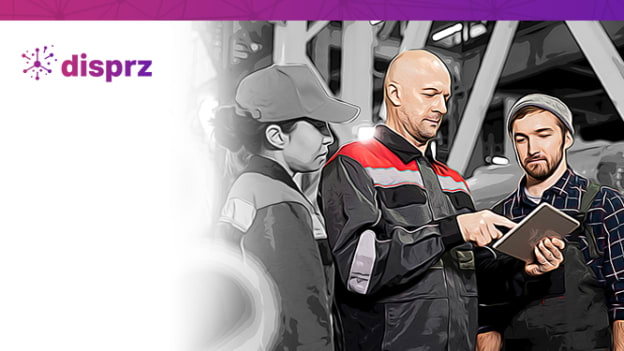How companies can close the skill gap for frontline workers–faster

A retail manager, responsible for more than $80 MN in annual revenue, an airline worker who oversees a yearly passenger volume worth more than $160 MN, a banking employee who deals with upward of seven million questions from customers a year, a health worker who is spending days on the ground to deliver critical health care facilities and vaccinations to hundreds of people in a day. These aren’t executives at a corporate headquarters; they are the critical frontline employees that serve our customers and deliver the promise.
Although frontline workers are largely responsible for putting the company’s broader goals and values into action, they often lack the digital tools and solutions needed to do so.
In fact, a Forrester study found that only 23 percent of frontline workers have access to the technology they need to do their jobs. And if they do have access to the technology and digital tools they need, they likely are not being trained on how to use them.
Your frontline workforce is the one who directly interacts with customers. Given the pandemic and ongoing ecosystem has considerably impacted the way business and customers interact, it becomes critical for the business to focus on right-skilling their frontline workers. Given the increased automation at work, most frontline workers—whether that be those directly interfacing with customers in a call center or working behind the scenes in a warehouse—are facing job security risks. This pool of workers is an untapped resource with the motivation and potential to upskill and reskill into the types of positions you need.
Why closing the frontline skill gap should be an organizations’ immediate agenda?
The frontline talent typically constitutes two-thirds of the workforce and is responsible for the part of the company that typically defines the customer experience. In fact, according to a study, it was found that despite the phenomenal growth of e-commerce, 68 percent of customers said it was vital for them to be engaged by frontline staff in a survey. This shows how important it is to train your frontline staff with utmost care. Empowering your frontline talent with rights skills has a direct impact on your customer experience. Organizations would have to quickly need to pivot their learning strategies and using the right digital learning technologies to stay ahead in this market.
According to research conducted by Gartner, 70 percent of employees have not mastered the skills they need for their jobs today. Unfortunately, there is a large percentage of employees who are not even aware of the skills that matter the most.
However, acknowledging the importance of frontline workers is not enough, and acting on it hasn’t always been easy. There is no one skill that fits each business, each role, and hence, understanding the skill gap, tailoring the right skilling strategies based on organizational and individual skill gap assessments is the first step towards future-proofing your frontline workers.
Skilling if not done right can add additional cost to the company without any returns– loss in productivity, loss in performance, loss in production and output.
While the process may sound cumbersome, the current technology has made the skill identification and gaps easier to get acknowledged and acted upon. Features like role-based identification, skill gap visibility, skill benchmarking speed up the process of creating the right learning pathways for the workers.
Linking business performance with your frontline performance
Today, skilling needs to be seen more as the driver for business growth than just individual growth. Learning professionals would need to reimagine their learning strategy which drives business outcomes by introducing engaging learning experiences for their frontline workers. Frontline enablement can generally be achieved generally in the following ways:
- Skilling in the flow of work: Use learning platforms that can enable automated workflows linked with employee performance. As frontline workers are usually on the go, offer mobile-first micro-learning like on-the-job training, manager coaching, live training, curated pathways, assessments including live viva/sales pitches.
- Ensure engaging content: The right content plays a critical role in a learner’s engagement. Content that is consistent, bite-sized, and mobile-first offers great experience and ease for learners to consume learning content daily. Further, features like gamification and social collaboration can lead to peer learning and engagement.
- Business-led skilling: The ultimate goal of your learning strategy is the impact created on business performance, hence, the learning goals of your frontline talent can be linked to business metrics like– KPI, KRAs, and behaviors.
For example, technology today can help witness the real-time translation of learning outcomes to work behavior that links back to business outcomes. Further, the new learning technologies also offer to track employee level performance like KPI, KRAs, by integrating with business systems you use for support, sales & marketing, collaboration, or with even your internally developed business tools.
Investing in digital learning solutions for frontline workers is a clear business advantage
The COVID-19 pandemic highlighted the importance of frontline industries across the globe. Companies looking to keep pace with industry advancements will be smart to adopt skilling solutions sooner rather than later–but it’s also the right thing to do.
With the transition to the virtual mode of working and hybrid work model is recognized as the next big disruptor to the way we work, collaborate, and learn; organizations need to tap into the power of learning technologies and tools to not only enable virtual learning but enhance the virtual ecosystem by making learning more interactive, engaging, and hence create a stronger L&D proposition. And hence, this places a new demand on organizations to select the best technology out in the market. Technologies like AI that can help companies to identify the right skills for their frontline workers and hyper-personalized skilling pathways that adapt based on individual learning interests have become increasingly important to create tailored learning journeys.
Tracking learning outcomes have always been a challenge for the managers and the L&D teams. However, learning technologies coupled with advanced analytics can monitor and track the progress of a learner. Learning analytics not only monitors the learning journey of a learner but also helps managers and employers recognize the high-performing employees and top talent within the teams.
Further, in the times when we are going through the greatest talent war and hiring for skilled frontline talent can be an added cost, organizations need to take a more nuanced approach towards talent mobility. Adopting the right learning technologies can help you succeed in redefining frontline talent skills that can improve their performance remarkably. Right-skilling will play a significant role since hiring and outsourcing won’t prove sufficient to fill most gaps. Hence, the learning technology you adopt can play an instrumental role in your talent mobility and career progression strategy.
For example, Disprz’s Skills Architect defines and benchmarks role-based functional, leadership, mindset & digital skills across various industries and job roles. Skills benchmarking further allows you to have a clear view of the career progressions and suggestions based on the current skill scores of your team members.
An unprecedented skill crisis will strike unless employers and employees recognize that they must adapt to change and begin actively forging reskilling initiatives.
To know more on how you can enable your talent with the right skills faster, follow #WinningInthe20s for more best practices and programs.







